If you want to encourage the growth of your grass, then you will need to provide it with the proper care and attention it requires. One of the best ways to ensure this is by applying a good fertilizer to your grass.
However, there are many options available. Some are helpful for new lawns, while others claim to revitalize old lawns. Similarly, some are for winterizing, while others kill pests and weeds on a lawn. So, which should you use? Read on to find out which is better Milorganite vs Scotts.
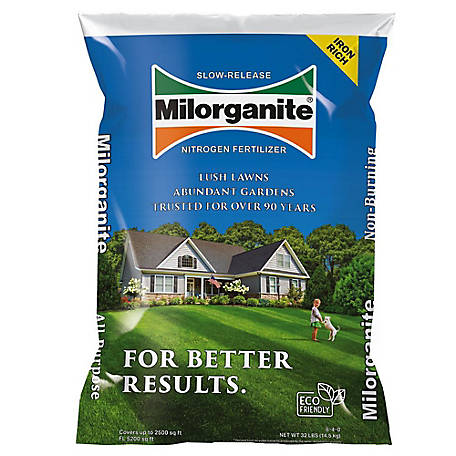
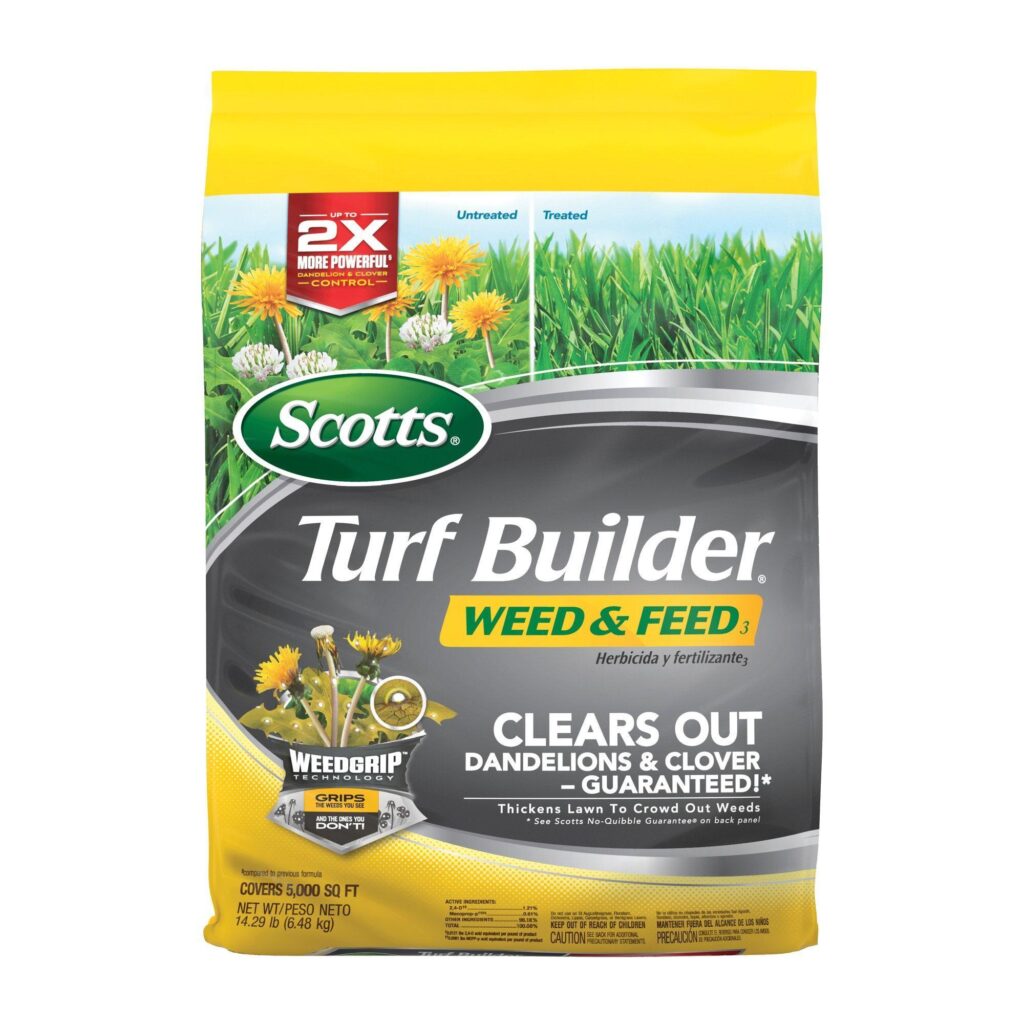
Left – Milorganite is an environmentally friendly, slow-release nitrogen fertilizer.
Right – Scotts Turf Builder Lawn Food aids in the development of a lush, green lawn.
Milorganite and Scotts are two names that are familiar to the majority of homeowners who have a lawn. They are both well-known brands in the field of lawn care, and each company offers quality solutions to address various concerns that one may experience when maintaining or taking care of their lawns.
Both types of fertilizer come with their own set of benefits and cons. They are most effective when used in conjunction with one another as part of a hybrid fertilization program.
Milorganite is most effective on lawns in the early spring and July. Whereas Scotts Turf Builder is most beneficial to your yard when administered in late spring and fall.
Continue reading. I will be going into greater detail on comparing the formulas, the benefits and drawbacks, the technique, and the ideal time to utilize each product.
Milorganite Vs Scotts | Overview
Before we get into the specifics of comparing the two products, let’s first go over a brief overview of what each brand offers and what each product is.
Scotts

Scotts is a global lawn care market leader with a diverse product line.
In 1868, Orlando M. Scott established Scotts as a premium seed firm serving the agricultural industry in the United States. Scotts has been in business ever since. Scotts Lawn Care is a well-known brand for lawn care goods such as fertilizer, weed control, and grass seeds.
In addition to manufacturing a wide range of items that can assist you in perfecting your lawn, Scotts Lawn Care also provides a number of programs and apps that are intended to make it simpler to determine what products to use and when to use them.
The corporation is responsible for producing the Scotts, Miracle-Gro, and Ortho brands in the United States. The business also sells consumer Roundup.
Furthermore, Scott’s Lawn Care Inc. has reliable and skilled operators who have been servicing home lawns and other turf properties year after year.
The accessibility of Scotts’ products and the company’s multimillion-dollar annual advertising budget have contributed significantly to the brand’s widespread popularity.
Scotts can provide you with all the necessary lawn care items, regardless of where you live. They will deliver each product to your home once you have placed an order, and they will even email you reminders as to when you need to reorder things.
Additionally, Scott’s Lawn Care is a full-service landscaping firm that focuses on providing commercial and residential lawn services. These services include design, construction, and comprehensive property upkeep.
Milorganite

Established in 1926, Milorganite is a fertilizer manufacturing company.
The Milwaukee Metropolitan Sewerage District is the company that produces the Milorganite fertilizer. My favorite thing about them is that their primary focus is on creating fertilizer in a sustainable and environmentally friendly manner.
Milorganite is a brand of biosolids fertilizer created by the Milwaukee Metropolitan Sewerage District by processing sewage sludge. The sewage system in the metropolitan region of Milwaukee is used to collect wastewater from municipal treatment plants.
After settling, wastewater is treated with bacteria to break down organic debris. As a result of this process, sewage sludge is created.
This is then dried at temperatures ranging from 900 to 1,200 degrees Fahrenheit (482 to 649 degrees Celsius) using hot air, which warms the sewage sludge to a temperature that kills bacteria.
After being compressed into pellets, the material is given the trade name Milorganite and sold across the United States. These heat-dried biosolid pellets have a high concentration of organic matter, as well as slow-release organic nitrogen and water-insoluble phosphorus that is coupled with iron and aluminum.
Milorganite can be used freely in gardens that raise food crops for human consumption. In addition to fertilizer, the company offers many lawn care and landscaping services.
RELATED: Nitrogen Vs. Iron For Lawn | Which To Use & When To Use It? A Comprehensive Guide
Scotts Vs. Milorganite | Pros & Cons
While Milorganite is designed to be a slow-release, iron-rich, fertilizer that supports grass root growth in spring, Scotts Lawn Builder is engineered to produce substantially larger increases in the grass growth and color of grass blades.
However, both products have their advantages and disadvantages, and neither one of them is flawless.
Let’s discuss this topic in a little bit more detail!
Scotts Pros & Cons
There are two different kinds of Scotts Turf Builder available: Scotts Turf Builder Northern Lawn Food and Scotts Turf Builder Southern Lawn Food.
They both supply high levels of nitrogen, which stimulates the growth of grass above ground, and potassium, which helps grass resist disease.
| Pros | Cons |
| Simple to put to use. Pricing is reasonable. Ideal for applying in the early fall to strengthen grass before the winter. Excellent for late-spring applications. It contains potassium, which increases grass hardiness. A high nitrogen level promotes rapid above-ground grass growth. | To avoid lawn damage, use caution. Not suitable for a house with children or pets. It is not organic. If applied in early spring, an excess of nitrogen will impede grass growth. Can “burn” grass if used in excess or at the incorrect time. Applying it during the hot, dry summer months can damage the grass by drying it out. |
Milorganite Pros & Cons
Milorganite is a non-chemical based organic lawn fertilizer that delivers iron and feeds soil bacteria. It is not harsh or difficult to apply, and there is only a marginal possibility that it will kill or damage your lawn.
However, since it contains less quantity of nitrogen than Scotts Turf Builder, it will not provide a rapid boost in grass growth.
| Pros | Cons |
Will not “burn” the lawn with an excess of nitrogen. The presence of iron is responsible for the lush green color. Simple fertilizer, ideal for people new to lawn maintenance. Perfect for fertilizer applications in summer when chemical fertilizers would burn the grass. It is ideal for early spring applications because it promotes natural root growth | Using it in the late spring or fall does not provide grass growth the most boost. To say the least, it’s not cheap. Less nitrogen than Scotts Turf Builder, yielding less grass growth. It lacks potassium, which helps grass resist drought, disease and cold. It could take a few weeks before you see any improvements. |
RELATED: How To Identify and Control Black Medic Weed In A Lawn | A Comprehensive Guide
How To Use Scotts On A Lawn?
Scotts has a 4-step fertilizer regimen for growing the perfect lawn. The Scotts 4-Step Fertilizer Program is exactly what its name implies: it is a 4-step fertilizer and weed killer package that is intended to nourish your lawn, block the weeds, and take the guesswork out of lawn care so that you can simply enjoy your yard.
Following are the four steps:
- Crabgrass Control
- Controlling the Weeds
- Lawn Food with 2% iron
- Fall Lawn food
Each step must be implemented at the appropriate time of year in your region to see the full benefits. Each phase in the program contains distinct ingredients and serves a particular purpose in addressing various issues that are common among lawn owners.
Step 1. Crabgrass Control
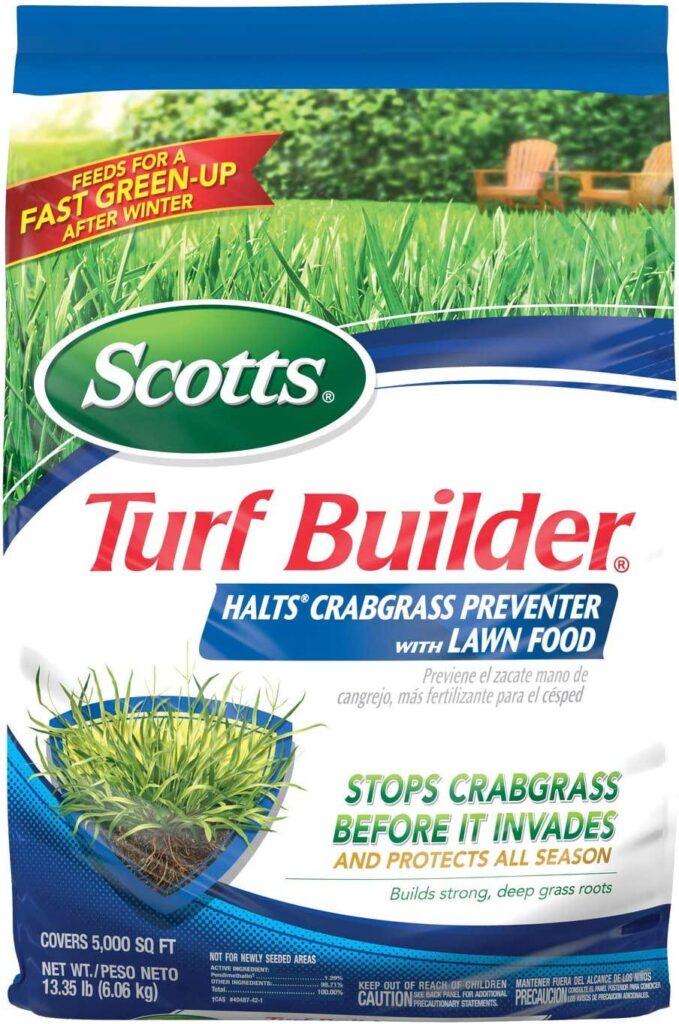
Scotts Turf Builder Halts Crabgrass Preventer with Lawn Food
The crabgrass preventer is the first step in the four-step fertilizer program that Scotts offers. Crabgrass is a grassy weed that spreads quickly and grows in a lateral direction, suffocating your turfgrass in the process. In addition to this, Scotts Crabgrass Preventer nourishes the grass to help it recover from the winter.
For best results, apply between February and April, while temperatures are still relatively mild, as early in the spring as possible (under 80F). However, the weather in your area and the timing of the season will determine which date is best for you.
The product will also assist in preventing moss from growing on your lawn while also warding off pesky winter weeds like chickweed, which can be a real pain if left behind.
Step 2. Controlling The Weeds
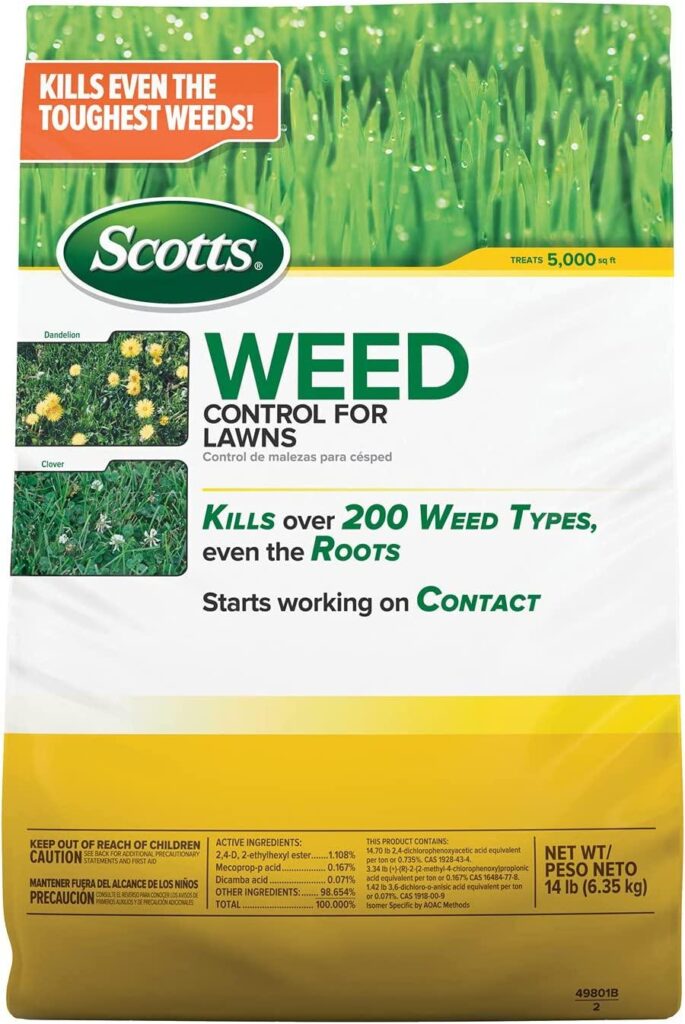
Scotts Weed Control for Lawns, 5000 sq. ft.
Even though Crabgrass can be avoided by following Step 1, other types of weeds may become a problem after the spring season has passed. These include weeds like dandelions and different types of broadleaf plants.
For these, it is best to apply Scotts Weed Control for Lawns in the late spring, anytime between April and June.
However, you should wait at least 4 to 6 weeks after applying the Crabgrass Preventer before applying Scotts Weed Control for Lawns. It destroys various broadleaf weeds, including dandelions, while feeding and nurturing the lawn.
Using Scotts Weed Control for Lawns helps to create healthy turf that is dense and green from the roots up. The term “weed and feed” is commonly used to refer to the combination of herbicide and fertilizer used in the agricultural industry.
RELATED: How Many Types Of Crabgrass Are There? A Comprehensive Guide
Step 3. Applying Lawn Food With 2% Iron
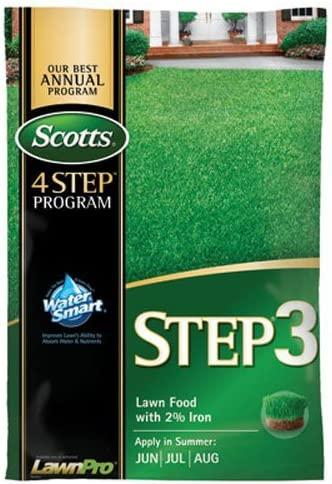
Scotts 33040 LawnPro Step 3 Lawn Food with 2-Percent Iron.
Scotts Lawn Food With 2% Iron is an excellent product that can help you green up our grass. In addition, it makes the lawn more resistant to heat and drought. You should use it during the summer, specifically between June and August, for the best result.
It provides nourishment and fortifies the lawn so that it can better withstand heat and drought. In addition, there will be no adverse effects on your property if used in the way the manufacturer recommends.
Following the application of Scotts Lawn Food with 2% Iron, you will need to water the grass on the lawn.
If, on the other hand, there is a chance of precipitation, you can skip this step. However, you should avoid applying this to your grass on days when the temperature is exceptionally high.
Step 4. Applying Fall Lawn Food
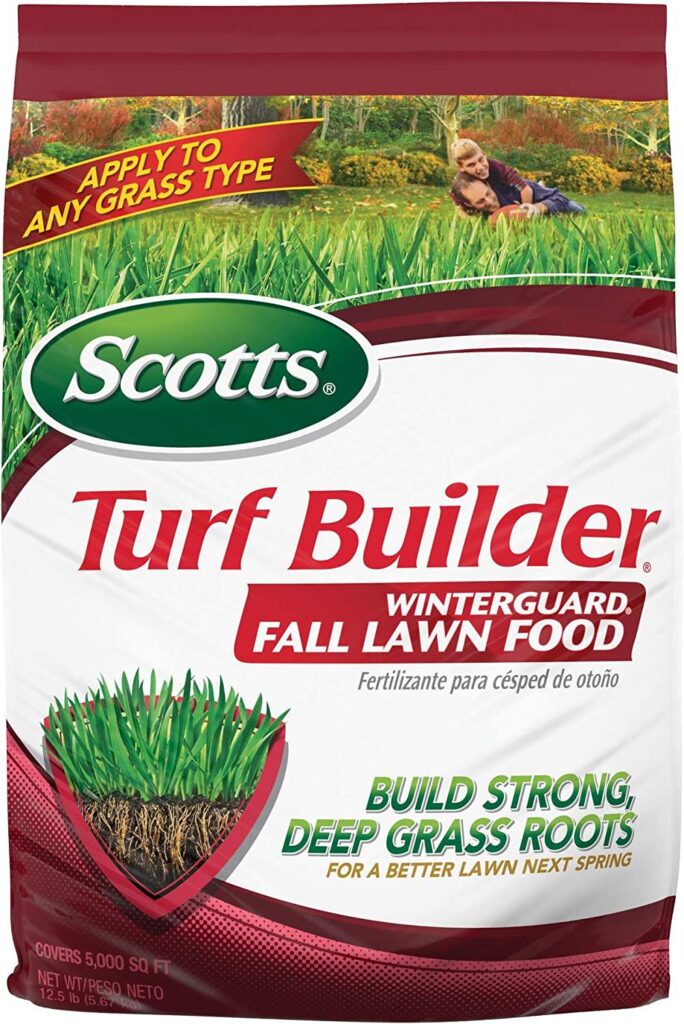
Scotts Turf Builder WinterGuard Fall Lawn Food.
Following the strengthening of the lawn, this is the last push to fight weeds, dryness, and heat. During the fall, feeding the grass with Scotts Turf Builder WinterGuard Fall Lawn Food helps it develop robust roots, resulting in a healthier lawn come spring.
This fertilizer provides the nutrients that lawns require to repair the damage caused by the heat, drought, and activity that occurred throughout the summer.
It is recommended to apply Scotts Turf Builder WinterGuard Fall Lawn Food between August and November, approximately four to six weeks after Step 3.
How To Use Milorganite On A Lawn?
This is a slow-release fertilizer that also contains iron. This means you can apply it without fear of burning areas of your lawn, even if you spill a little or apply too much. Nevertheless, an application guide is below to get the best possible outcomes.
For New Lawns
Before sowing or sodding, mix two inches of Milorganite into the top two inches of the soil. Then, following the third mowing of the lawn, you should apply Milorganite to your grass once again. After that, follow and maintain a proper lawn care schedule.
| Seed or Sod | Application Rate |
| Seeding | 64 pounds/2,500 square feet |
| Sodding | 64 pounds/2,500 square feet |
For Warm-Season Grasses
Warm-season grasses such as Centipedegrass, Bahia, St. Augustine, and Zoysia require four fertilizer applications per year. It is essential to refrain from fertilizing southern grasses too late in the fall.
When you fertilize warm-season grasses in fall, you are working against the natural tendency of the grass to go dormant and instead encourage its growth. This could strain your lawn and make it thin and patchy.
When applying Milorganite for the first time in the year, ensure that temperatures are continuously around 70s during the day, suggesting soil temperatures of about 60s. Fertilizing warm-season grasses in the fall should be done for the last time, one month before the grasses enter their dormant phase.
| Time To Apply | Application Rate |
| When Grass Comes Out From Dormancy | 32 pounds/2,500 square feet |
| In May | 32 pounds/2,500 square feet |
| Early September | 32 pounds/2,500 square feet |
| In October | 32 pounds/2,500 square feet |
For Cool-Season Grasses
Cool-season grasses, such as perennial ryegrass, Kentucky bluegrass, and fescue grass, need to be fed four times a year, just like warm-season grasses. The first fertilization of the year should occur when daytime temperatures are consistently in the 60s, indicating that soil temperatures are around the 50s.
For the final application, apply Milorganite late in the season, preferably right before the first frost or snowfall. If you fertilize too early, the grass will put its energy towards growing its shoots, and you will not see any improvement in the root system.
| Time To Apply | Application Rate |
| Mid to end of May | 32 pounds/2,500 square feet |
| In July | 32 pounds/2,500 square feet |
| Early September | 32 pounds/2,500 square feet |
| Mid-November | 32 pounds/2,500 square feet |
Can You Use Scotts & Milorganite Together?
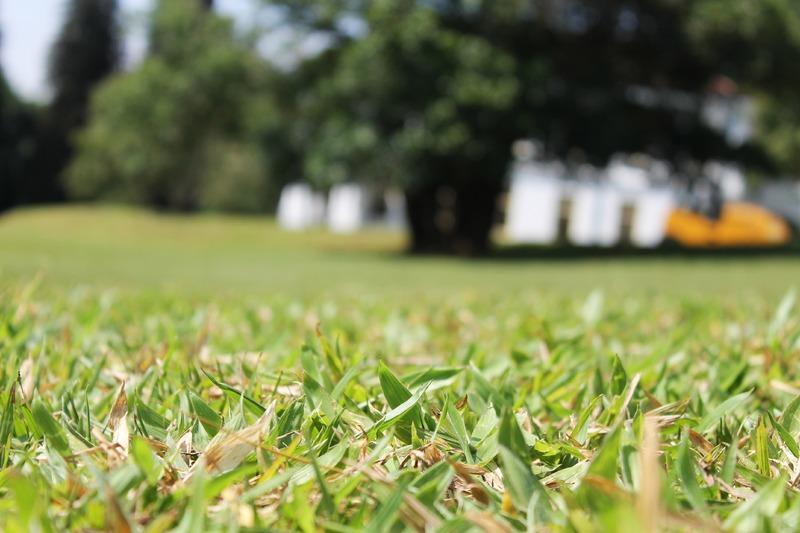
You should be fine if you stick to Scott’s four-step plan and supplement with Milorganite.
Learning the make-up of your yard and the care it requires is the true key to successful lawn care. So, pay close attention, and conduct soil tests every year. You will, over time, figure out what approaches are most successful for your yard. For instance, it is essential to have an understanding of the microclimate that exists on your lot.
Nobody else has the same light and shade conditions as you do, nor does anyone else have the same grass, weather, or soil composition. An excessive amount of a single product is almost never desirable. Using both Milorganite and Scotts Turf Builder on your grass is the best strategy for achieving a lush and green turf.
Together, they are the perfect one-two punch for ensuring that your grass obtains the correct nitrogen levels and other vital nutrients. This will make it possible for you to zero in on specific problems such as Crabgrass and other weeds.
And, with an eco-friendly organic product, you’ll also feed the soil that your grass requires to thrive.
Also, if you are going to apply Milorganite and Scotts simultaneously, you will need to make two different passes with your spreader. This ensures consistent coverage and allows you to alter the settings to fit the size of the granules in each product.
Conclusion
Even though they are both lawn fertilizers, Scotts Turf Builder and Milorganite are vastly different. Nevertheless, when I or anybody else compares Milorganite to Scotts, please remember that neither product is harmful to your lawn.
Each one is a reputable company that has worked hard to acquire its status as a market leader in the lawn care field. Consider implementing a hybrid fertilization program combining Milorganite in the early spring and Scotts Turf Builder in the late spring and fall. This will allow you to get the most out of both types of fertilizer.
However, I’ll say it again: lawn care is about your budget, your time, your values, and your goals, and only you can decide what the best option is for both you and your lawn.
Frequently Asked Questions
What fertilizer is better than Scotts?
Although Scotts fertilizer is excellent, it is not for everyone, especially those who prefer organic lawn care. That is where Milorganite comes in. Milorganite is a type of organic fertilizer that supplies iron and feeds the bacteria that live in the soil. It is gentle and simple to apply, and there is only a marginal possibility that it may cause damage to your grass.
When should you use Milorganite?
Milorganite needs to be applied between three and four times a year for effective grass growth. The secret to Milorganite’s success is to schedule it appropriately based on your type of grass. However, depending on where you live and the type of grass you have on your lawn, the precise time of the Milorganite treatment will change. See above!
Which is better, St Augustine Milorganite or Scotts?
We recommend Scotts for most basic lawn care applications due to its ease of use. In addition, the four steps in applying Scotts are simple to follow and rare to get wrong.
However, if you have been caring for your lawn for quite a while and already know how to care for your grass, we recommend Milorganite.
Can I apply Milorganite every month?
There is no justification for applying Milorganite to your grass on a monthly basis, despite how tempting it may be. Milorganite is a type of organic fertilizer with a significant amount of nitrogen and a very slow release rate.
It can take Milorganite anywhere from eight to ten weeks before all the soil nutrients it contains are released and fed to your grass.
Is Milorganite the best fertilizer?
Milorganite is a reliable, slow-release nitrogen fertilizer that decreases the risk of nutrient runoff. It promotes the healthy growth of lawns, trees, shrubs, and flowers.
However, because of its slow-release nature, it might not work on all types of soil, and it will take longer for you to see results.
Should I water after applying Scotts Turf Builder?
Even though many Scotts Turf Builder products don’t necessarily need to be watered, you should lightly water your grass immediately for the best results.
If, on the other hand, you are working with a liquid product or there is a chance of precipitation, you can skip this step entirely.
Will Scotts Turf Builder burn my lawn?
Granular Grass Foods from Scotts are slow-release products, which means that the nutrients are disseminated throughout the lawn in a measured manner.
However, overfertilizing your lawn can cause the nitrogen and salt levels in the soil to rise rapidly, which can burn or even kill the grass.
Sources for Further Reading
Scotts Company Collection – Michigan State University Libraries
New ScottsMiracle-Gro Facility For Lawn And Garden Research – Texas A&M Today
Benefits of using lawn fertilizers containing slow-release nitrogen – Michigan State University Extension Service
Organic Lawn Fertilization – University of Wisconsin-Madison Division of Extension Service
Editor’s Recommendations
When To Overseed Bermuda Grass: The Best Time And The Dos and Don’ts







